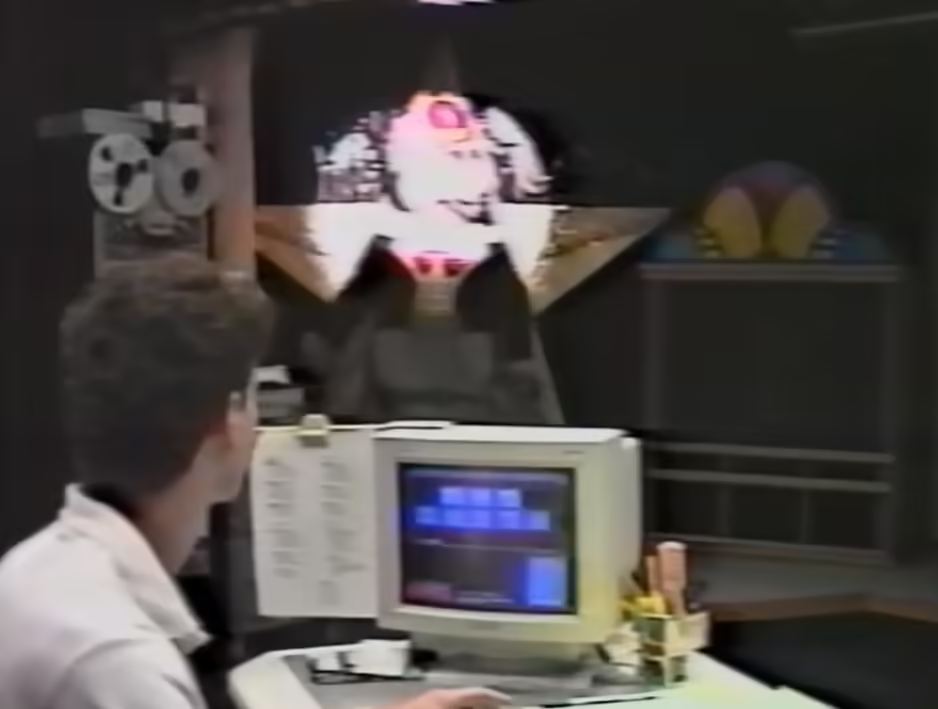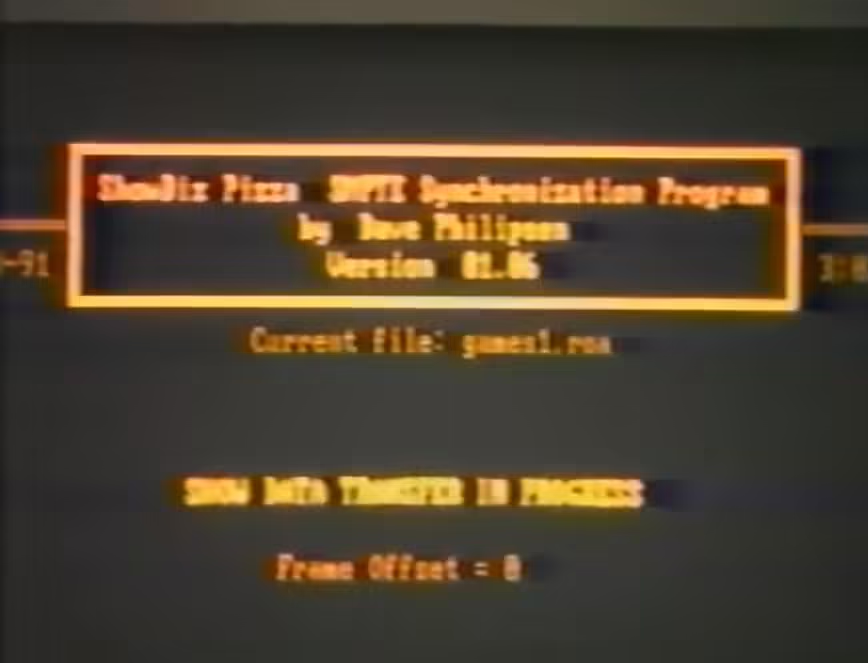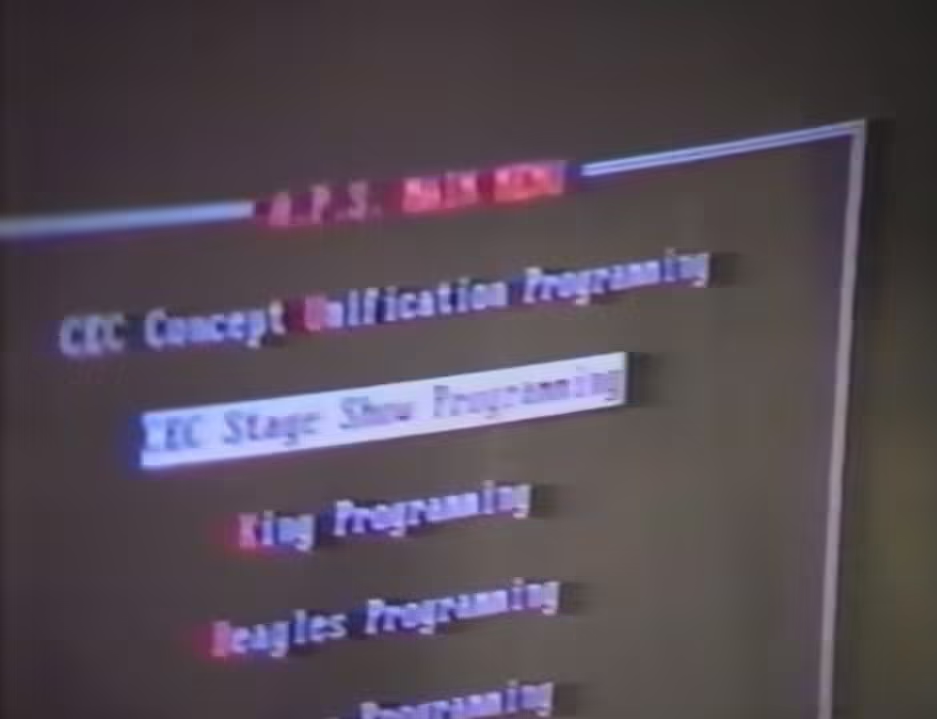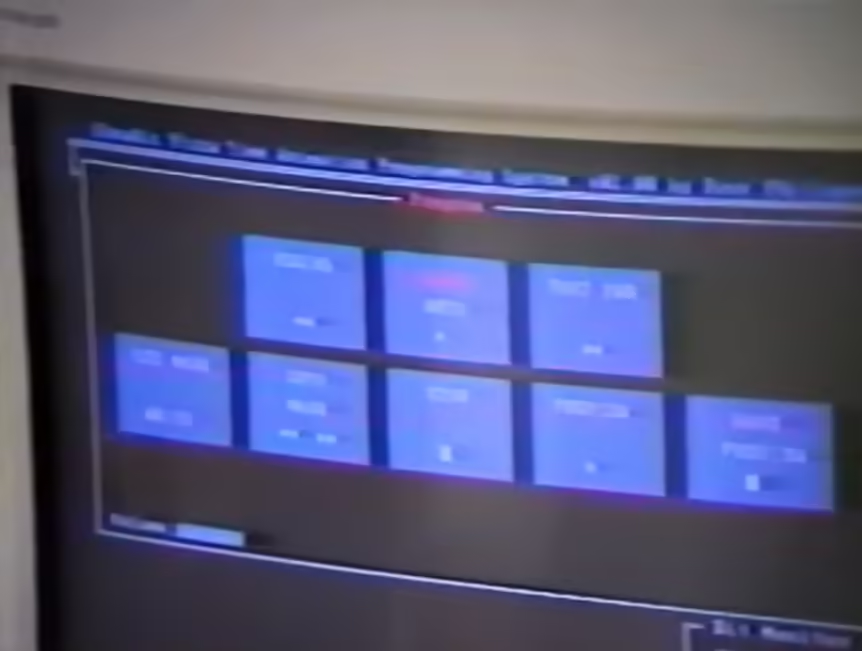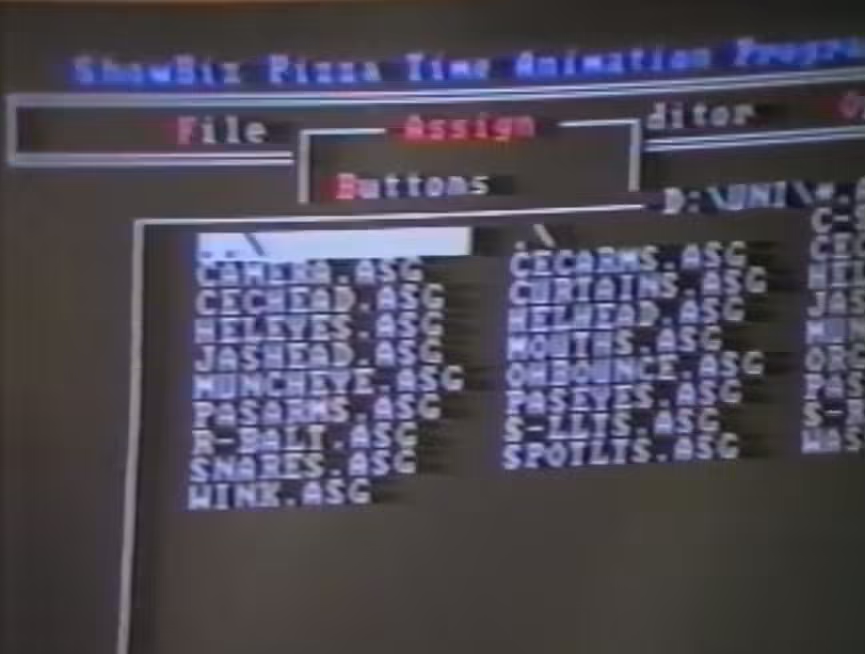Animation Programming System
The Animation Programming System (APS) was a collection of software created by David Philipsen for Chuck E. Cheese corporate in 1990. This would be used by the Entertainment department as the new way for creating and synching animatronic movements to their video productions. Notably this began around the time Concept Unification was being integrated into stores, making this software all-encompassing for handling the 3-Stage’s Grey Box, the Cabaret’s Cyberamic Control System, and the newer Cyberamic SVHS stage controllers in one package. Sometime in the late 90’s, it was updated to include support for Studio C. It continues to be used to this day for most programming at CEC Entertainment Corp.
Software
A few pieces of software were used in tandem for all the processes related to creating the animatronic programs.
- ShowBiz Pizza SMPTE Synchronization Program
- ShowBiz Pizza Time Animation Program
- ShowBiz Pizza Time Animation Programming System
- A.P.S.
Version History
Info on the versions is unclear, with the initial 1.0 version seen in 1991 being the only confirmation of a version number. Brian Hagan by his time working there mentions none of the menus for the Cabaret characters, suspecting some sort of major version change by 1996. The software would be updated once Studio C was made, as it is known to be programmed on APS. Finally, as confirmed by Donovan Marcelle, the last known update of APS was for the Friday Night Neon show, in which David Philipsen flew in to update the software for the unique day/night shows.(1) This implies a previous update of the software for the January 2010 Show, as that show also included a similar day/night system. This makes the potential updates:
- v1.0 - Initial release (Around September 1990)
- v??? - Cabaret removal (1995-1996)
- v??? - Studio C integration (1997)
- v??? - January 2010 day/night update (2010)
- v??? - Friday Night Neon day/night update (August 2017)
A.P.S.
The main APS program was used to select between five different types of animatronic systems for use in programming. Clicking on a group would presumably put the user into the ShowBiz Pizza Time Animation Program, to begin programming showtapes.
- CEC Concept Unification Programming
- CEC Stage Show Programming
- King Programming
- Beagles Programming
- Bowzers Programming
At some point, CEC Road Stage programming was possibly added to the list, which would eventually lead to the R12 format. Notably, the Beagles and Beach Bowzers are listed separately on the main menu. This could have been to simply change the names of the characters when using the editor, but could also possibly mean some bits on the Bit Chart were swapped around. The Beagles being on the main menu also provides evidence towards the rumored 90’s Beagles showtapes.
Programming Systems
The ShowBiz Pizza Time Animation Program (SPTAP) or ShowBiz Pizza Time Animation Programming System (SPTAPS) was the main software used for creating showtape programs. It was used for assigning bits onto keys of the user’s keyboard, along with saving and loading showtapes. After setting up a show and bits, it would be used for live programming, allowing the user to move animatronics in real time by connecting the software to their control system. The initial menu had multiple tabs labeled File, Assign, Editor, and an unknown tab that began with ‘Op’. File would be used for opening .aps files, along with saving them. Editor was presumably for adjusting and deleting pieces of a show, along with possibly linking to the Synchronization Program. The Assign menu would show a dropdown menu. The first button being Buttons, which would be a list of files that could assign specific bits to buttons on a physical controller. The maximum bits assignable inside the file was 8. This could be configured and saved as a .asg (assign) file using the third option in the dropdown. Clearing the current assign, and loading .asg files could also be done. In the 1991 CEC Entertainment & Support Dept Promo(2), a selection of .asg files can be seen on a computer. These are:
| CAMERA.ASG | CECARMS.ASG | C-S(?) |
| CECHEAD.ASG | CURTAINS.ASG | CEC(?) |
| HELEYES.ASG | HELHEAD.ASG | HEL(?) |
| JASHEAD.ASG | MOUTHS.ASG | JAS(?) |
| MUNCHEYE.ASG | OHBOUNCE.ASG | MUN(?) |
| PASARMS.ASG | PASEYES.ASG | ORG(?) |
| R-BALT.ASG | S-LLTS.ASG | PAS(?) |
| SNARES.ASG | SPOTLTS.ASG | S-R(?) |
| WINK.ASG | WAS(?) |
(The third row of files is obscured, but can partially be seen) The main software allowed the user to play a programmed showtape live on their animatronics through the software. The show could be paused, fast-forwarded, and rewound, along with being able to skip to other segments in the show. Users could use their controller to activate bits on the Bit Chart. The controller consisted of a top row of 8 toggle buttons, and a bottom row of 8 input buttons. Each toggle would record inputs for the button below it when enabled. These recorded inputs would activate movements and lights, creating the programming for the showtape.
ShowBiz Pizza SMPTE Synchronization Program
This program was used for offsetting the bits in a showtape to account for user error and reaction times, synching any programming back up with the audio and video. In the mid 90’s this would be upgraded to support offsetting a specific bit in the show, which would mainly be used for mouth movements.
Floppy Disks
Showtapes were saved onto standard floppy disks, in which only the showtape data would be stored. Each segment was stored as a separate file, and shows were sometimes split across two floppy discs. Birthday and live show segments would be bundled in some of the floppies. The random movements burned into the EPROM’s of 3-stages and CEC stages were also saved onto these floppy disks. Each stage type had a different file extension to label its use, but they were all under the same format. The official extension for this format was labeled as .aps.
- .mvt for Random Movements
- .sho for 3-Stage and C-Stage (1990)
- .3st for 3-Stage (1991-1992)
- .c&r for C-Stage and Rocker Stages
- .roa for Road Stages (1990-1991)
- .r12 for Road, 1-Stage, and 2-Stages (1992)
- .bzr for Beach Bowsers
- .hlf (maybe Half Cyberamics. 1991?)
